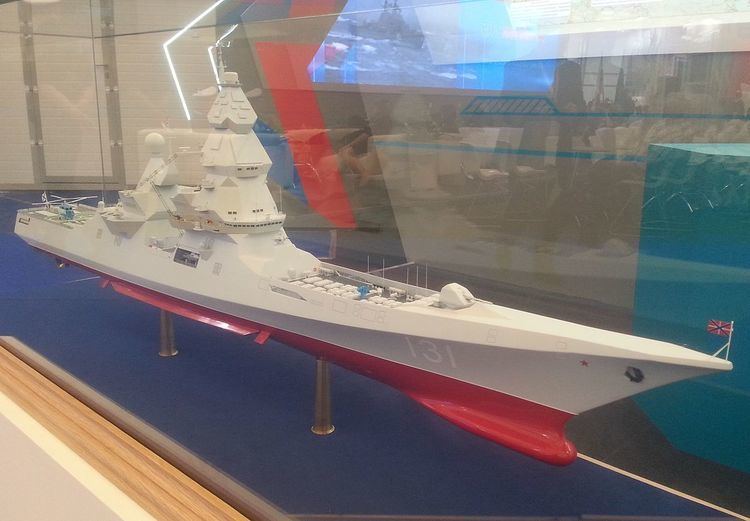Name Lider class Displacement 17,500 tons Beam 20 m (65 ft 7 in) | Type Destroyer Length 200 m (656 ft 2 in) | |
 | ||
Preceded by Sovremennyy-class destroyer
Udaloy-class destroyer
Slava-class cruiser | ||
The Lider-class destroyer (also Leader in translation ) Project 23560 or Shkval is under consideration for construction for the Russian Navy as a nuclear powered combined destroyer, large antisubmarine warship and guided missile cruiser.
Contents
Intended roles
“The Lider will be a universal ship, triple-hatted as a destroyer, large ASW ship and guided missile cruiser while being smaller than Project 1144 ships and carrying far more weaponry,” according to Valeriy Polovinki, advisor to the director general of the Krylov State Research Center that worked out the destroyer’s preliminary design, as reported in The Defence Talk. "It is meant to replace the Sovremennyy-class destroyers, the main anti-surface warships of the Russian Navy, as well as the Slava-class cruisers and the Udaloy class anti-submarine destroyers."
Capabilities
The Lider-class ships will be nuclear powered and have extensive food storage and stores, to give them an independent cruising capability of 90 days.
They will be about 200 metres (656 ft 2 in) long with a beam of 20 metres (65 ft 7 in), and a maximum speed of 32 knots (59 km/h). The vessels are estimated to displace around 17,500 tons.
A helicopter deck and hangars will accommodate two Kamov Ka-27M helicopters.
Weapon systems
The Leader's weapon systems are expected to include:
Program
Preliminary project approval was given in 2013. Technical plans are expected to be started in 2017.
Reports vary as to whether the Leader class is intended to commence building in 2018 or more likely 2019 according to former First Deputy Commander-in-Chief of the Russian Navy Admiral Igor Kasatonov.
The ships are likely to be built at the Severnaya Verf Shipyard in Saint Petersburg.
Eight ships are planned, four for the Northern Fleet and Pacific Fleet (oceangoing fleets); typically, this tasks one ship for long-range cruising, at least one for operating near the home shore, one for training, and one for repair in each area.
